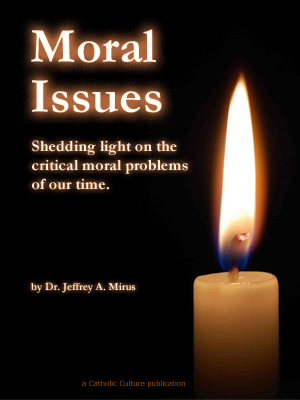Ash Wednesday: Memento Homo
By Jennifer Gregory Miller ( bio - articles - email ) | Feb 16, 2021 | In The Liturgical Year
 “Remember, man, that you are dust, and to dust you shall return.”
“Remember, man, that you are dust, and to dust you shall return.”
Ash Wednesday begins the 2021 season of Lent. Pope Francis suggested a theme A Time for Renewing Faith, Hope and Love. I mentioned that I am taking on my Lent framing this question, “What Would St. Joseph Do?” The two themes will overlap, since so much of this is focusing on living the virtues, following St. Joseph’s example.
Beginning this Ash Wednesday there are a few sights and sounds that will be different.
“God,” not “One God”
First is a change in the wording of the Collect or Opening Prayer of the Mass, the concluding doxology, as agreed by the Committee on Divine Worship. The current translation—which concludes “[...]in the unity of the Holy Spirit, one God, for ever and ever”—is incorrect. There is no mention of “one” in the Latin, and “Deus” in the Latin text refers to Christ. Therefore, the correct translation, which is already reflected in the Missal in other languages (including our own USCCB Misal Romano) is simply: “[...] in the unity of the Holy Spirit, God, for ever and ever.” The Cardinal Prefect has pointed out the importance of affirming this Christological truth amid the religious pluralism of today’s world.
There will not be new liturgical books reissued as of now, since it is a removal of only the word “one.” The changes begin this Ash Wednesday. As we have heard “one God” for many years, it will sound different to our ears.
There is a digital copy of the Explanatory Notes from the Catholic Bishops’ Conference of England and Wales. They provide the reasons on why it is an important change “to safeguard both their Trinitarian nature, as well as their profession of the divinity of the Son.”
 A few years ago I provided a small booklet with the Collect Prayers of Lent to use at mealtime prayers, the approach similar to the Advent Wreath Prayers. I have updated the booklet so the Collects reflect the new changes of removing “one.”
A few years ago I provided a small booklet with the Collect Prayers of Lent to use at mealtime prayers, the approach similar to the Advent Wreath Prayers. I have updated the booklet so the Collects reflect the new changes of removing “one.”
Lenten Mealtime Prayers PDF to download.
Returning to Traditional Imposition
The Vatican announced that they altered the ash distribution to minimize contact between the priest and the congregation. The Congregation for Divine Worship and the Discipline of the Sacraments published a note on January 12, 2021, that the formula for distributing the ashes will be said once to the congregation, and the ashes will be sprinkled on each person’s head without saying anything.
 It is so human to want to cling to the familiar, and not embrace change. I have heard from several people how they want that ash cross on the forehead, as it’s the “right” and “traditional” way.
It is so human to want to cling to the familiar, and not embrace change. I have heard from several people how they want that ash cross on the forehead, as it’s the “right” and “traditional” way.
But is it? Is the Vatican actually restoring the proper way of distributing ashes?
Currently, the Roman Missal, Third Edition, has these instructions:
Then the Priest places ashes on the head of all those present who come to him, and says to each one:
Repent, and believe in the Gospel.
Or:
Remember that you are dust, and to dust you shall return.
Here is the complete rite for the Ordinary Form Mass
And the Book of Blessings has similar limited instructions on how the ashes are imposed on the head.
Looking back at previous instructions before Vatican II, there is also a lack of details. I went through many liturgical books, and these were the only two that detailed how the ashes are distributed.
From The Ceremonies of the Roman Rite by Adrian Fortescue, 1951:
Distribution of Ashes. …The priest who gives the ashes to the celebration takes some from the dish between the forefinger and thumb of his right hand, and sprinkles them in the form of a cross or with his thumb dipped in them makes the sign of the cross on the celebrant (standing bowed). The rubrics do not define exactly the place where the ashes are put.(Footnote) It is usual, in the case of priests and of all who are tonsured, to put the ashes at the place of the tonsure. Lay people receive them on the top of the head or on the forehead. In the case of women they should be put on the hair or forehead (when this can be conveniently done), not on the headdress. In making the cross with ashes the very Memento homo qui pulvis es et in pulverem reverteris is said.
Footnote: The Missal simply says “cinders imponit in capite”’; Memoriale Rituum says “in modum crucis imponit in capite.”

And a few years later in The Book of Ceremonies by Very Rev. Msgr Laurence J. O’Connell, 1956,
In distributing ashes, the priest takes the ashes between his thumb and forefinger and places them, in the form of a cross, on the forehead of lay people, and on the tonsure of clerics, saying to each Memento homo, qui pulvis es, et in pulverem reverteris (p. 492).
Footnote: If it is the custom, ashes may be placed on the hair, but not on the covering of the head.
The 1964 Roman Ritual, Imposing Ashes on Ash Wednesday repeats the simple non-detailed instruction for the priest to sprinkle “the blessed ashes on the head of the person.”
It seems that putting a cross on the forehead with ashes is more of an American tradition. Roman and Europeans usually have the ashes sprinkled on the heads. This Question and Answer from 2015, Ashes and How to Impose Them by Father Edward McNamara, LC addresses this question. I have often wondered why the Pope never had a cross of ashes on his forehead on Ash Wednesday.
While it’s “new” to us Americans, this change of imposition of the ashes might be a way of uniting the Church to do things a little more universally.
After all, the Gospel reading instructs us “when you fast, anoint your head and wash your face, so that you may not appear to be fasting, except to your Father who is hidden” (Matthew 6:17-18).
All comments are moderated. To lighten our editing burden, only current donors are allowed to Sound Off. If you are a current donor, log in to see the comment form; otherwise please support our work, and Sound Off!








